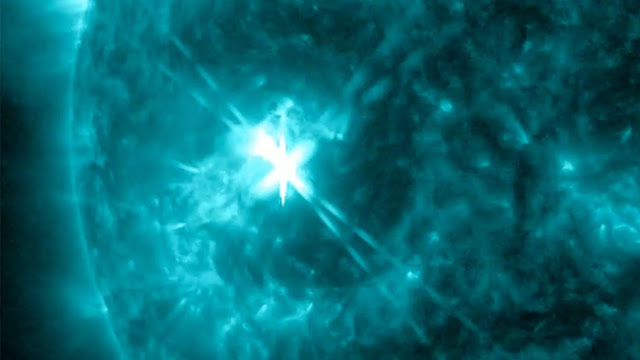The X1.1-class solar flare created a temporary radio blackout over South America.
A major solar flare erupted from the sun Saturday (Feb. 11), spawning a radio blackout for parts of Earth and setting the stage for more flares to come.
The huge solar flare, which registered as a powerful X1.1-class event on the scale used for such sun storms, peaked at 10:48 a.m. EST (1548 GMT) on Saturday, according to the U.S. Space Weather Prediction Center (SWPC) operated by NOAA. It originated from an area of the sun called Active Region 3217 and created a temporary radio blackout over South America, the center reported. NASA's Solar Dynamics Observatory captured stunning video of the solar flare.
"More flares are expected from this region as it moves across the sun creating occasional degradation of high frequency (3-30 MHz) communication," SWPC officials wrote in an alert.
Solar flares are massive eruptions of charged particles on the sun and come in a variety of intensities, with the smaller A-class and C-class flares denoting relatively minor events while the stronger M-class flares can lead to amplify the auroras we see on Earth. X-class are the strongest type of solar flares. The strongest X-class flare ever recorded occurred in 2003 and registered as an X28 flare before it overwhelmed the space weather sensors measuring it.
Intense solar flares can also eject out huge amounts of solar material in what scientists call a coronal mass ejection (CME), which can fling out vast clouds of solar plasma away from the sun at speeds of up to 1 million mph. When aimed directly at Earth, the strongest solar flares and CMEs can interfere with communications systems, power stations and even endanger astronauts and satellites in space.
According to Spaceweather.com, which tracks space weather events, there was no CME associated with Saturday's X1.1 solar flare. There was, the site added, a CME spotted from a different event — an eruption of a solar filament from the sun's northern hemisphere.
That eruption flung a CME towards Earth that should reach Earth on Feb. 14 and could lead to more intense auroras, the site reported.
"Arctic sky watchers could get a light show for Valentine's Day," Spaceweather.com wrote.


